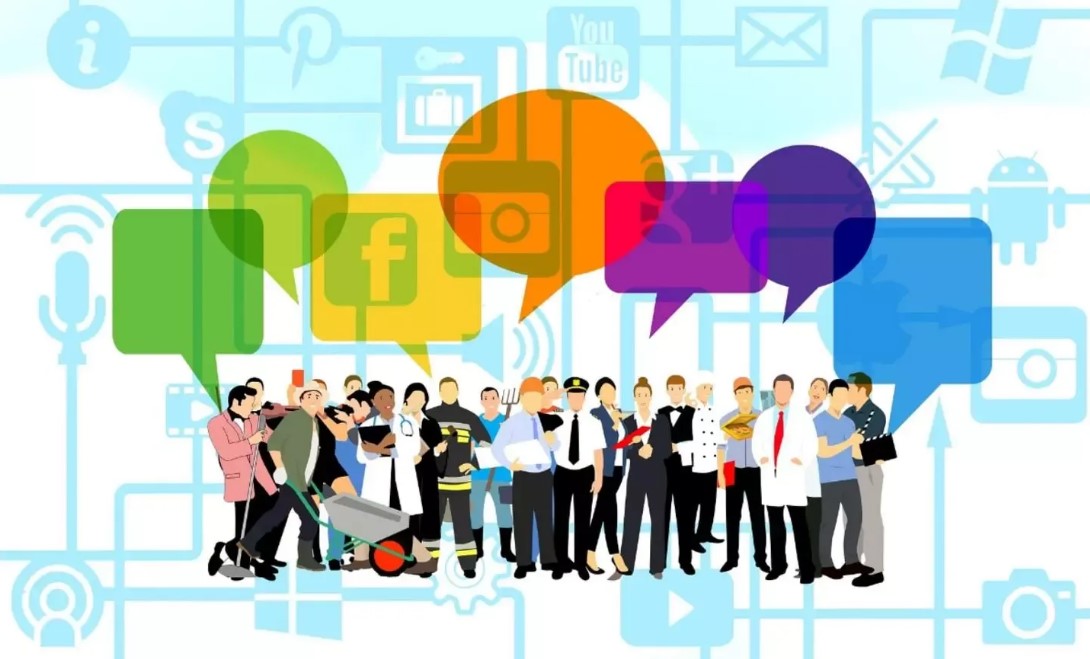Effective ways of interacting with the audience
Contents
How to properly organize audience interaction?
Identification of the target audience
Channels of interaction with the target audience

An
essential part of any business's success worldwide is effective interaction
with the target audience. Regardless of your industry - sales, services,
technology, or other - understanding and effectively interacting with your
target audience will help you establish strong relationships, gain consumer
preference, and significantly increase your competitiveness in the market.
But if you
are struggling with attracting new users, we recommend familiarizing yourself
with an article on effective methods of attracting a new target audience to
your website before reading further.
In this
article, we will discuss several important aspects that will help properly
organize interaction with the target audience, enabling your company to become
more open and accessible in the eyes of potential customers.

How to properly organize audience interaction?
There are
several key principles and recommendations that will help you organize quality
interaction with the audience, regardless of your activity or niche.
Identification of the target audience
Before
starting to interact with the target audience, it is important to determine who
they really are. Study your visitors to understand their needs, values, and
preferences. This will help you adapt your communication strategy and offerings
to their expectations.
Channels of interaction with the target audience
Once you
have identified your target audience, the next step will be to choose
communication channels:
• The first
channel of interaction with the audience is social media. Thanks to the
popularity of platforms such as Facebook, Instagram, Twitter, and YouTube,
companies have the opportunity not only to promote their products or services
but also to interact directly with consumers. They can answer questions, solve
problems, receive feedback, and even conduct surveys to better understand their
audience's needs.
• The
second channel is email. This traditional method of communication still remains
effective, especially for more formal requests and notifications. Companies can
send information about new products, discounts, events, etc. through email,
interacting with users directly in their mailboxes.
• The third
channel is blogs and online platforms. Many companies create their own blogs or
participate as guest writers on popular platforms to distribute useful
information to their target audience. Blogs provide an opportunity to provide
more detailed information about products, their features and benefits, as well
as share customer success stories.
• The
fourth channel is messengers and chatbots. Using messengers such as WhatsApp,
Viber, Telegram, and others, companies can organize direct personalized
conversations with each customer. Chatbots have also become a popular tool for
automatically answering basic questions and providing real-time information.
• The fifth
channel is traditional means of communication. Despite digital transformation,
many companies continue to use traditional means of communication such as phone
calls, faxes, and mailings. These channels are usually used for more complex or
confidential questions when personal communication is necessary.

Use
research data to determine where your target audience spends the most time - it
could be social networks, email, mobile applications, etc. To effectively
interact with your target audience, use separate accounts with the company name
on each of these services. This will not only help separate work and personal
life but also increase customer trust and overall streamline communication with
your users.
It is very
easy to create the necessary number of accounts using the SMS activation
service "Tiger SMS". The website offers virtual numbers for
registration on any of the popular platforms. And the process from purchasing a
number to creating an account takes no more than 5 minutes.
Register
the required number of accounts immediately, as this will make communication
with the audience much more convenient in the future. After that, you can focus
your efforts and resources on the appropriate channels to maximize the
effectiveness of your communications.
Creating valuable content
Valuable content is one of the key elements of a successful audience engagement strategy. Pay attention to creating useful, interesting, and unique content that is relevant to your target audience. This can include articles, blogs, videos, infographics, and more. Regularly updating your content will help you maintain the attention of your target audience and attract new users.
Interactive audience engagement
Do not limit communication to only presenting your content in a one-way manner. Interactive engagement with your audience, including responding to comments, questions, and feedback, will help you create a positive impression and demonstrate your dedication to your consumers. Be accessible and open to feedback, as this will help you improve your products or services and strengthen customer relationships.
Reputation management
Maintaining a good reputation is important for any company. Your relationship with your target audience affects how your company is perceived in society. Regularly monitor reviews, comments, and discussions about your company online, and respond to them accordingly. Be attentive to issues and offer solutions in case of customer dissatisfaction. Creating a positive image will contribute to the growth of trust and popularity for your brand.
Conclusion
Engaging with your target audience is a key element of successful business. Understanding the needs and expectations of your audience, effective communication channels, valuable content, active engagement, and reputation management will help you strengthen customer relationships and ultimately ensure the growth and success of your business.

